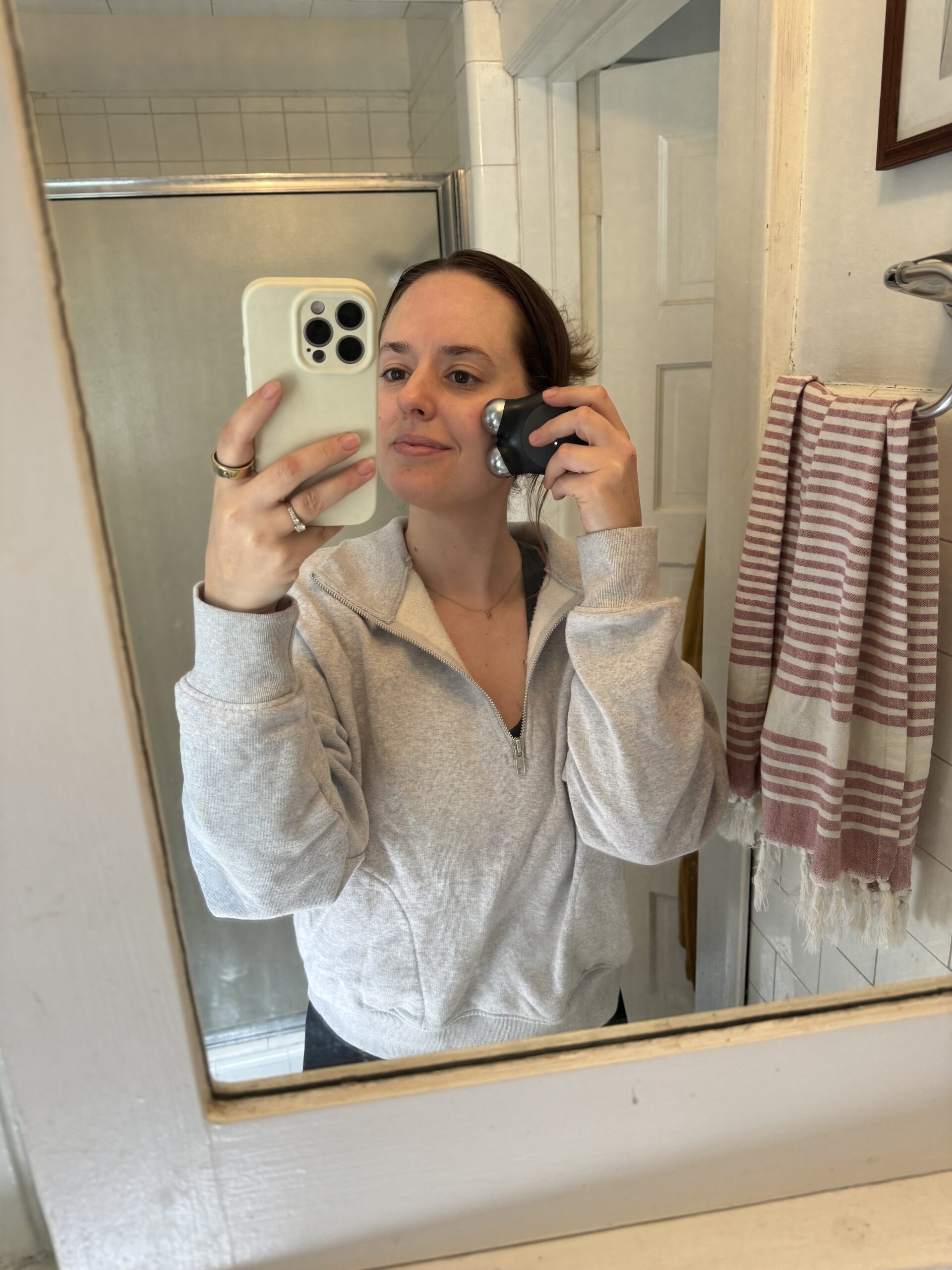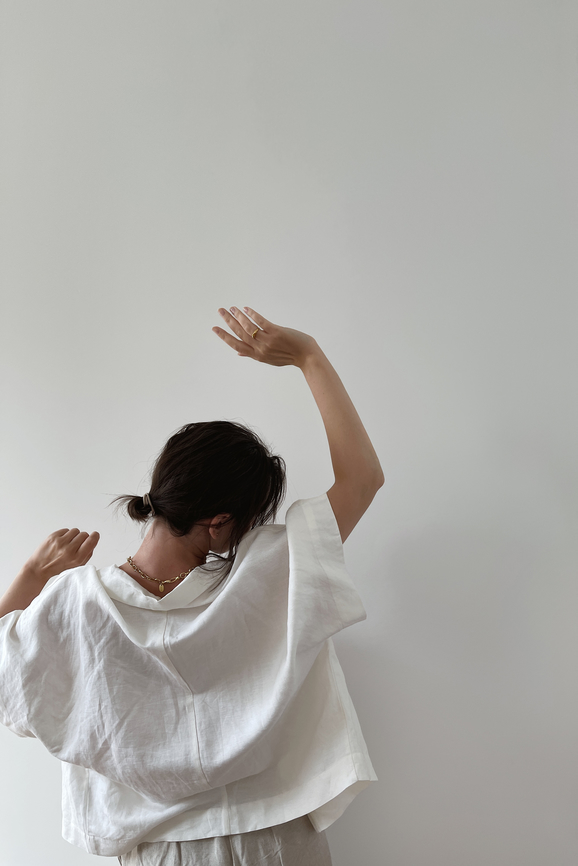
How To Decipher Body Language For Better Communication
Across a dinner table decorated with half-gone glasses of wine and plates of pasta, a small group of friends and I delved into the depths of conversation. We chatted about dating, dreams, and where we currently found snags in the progress of our lives. This kind of dialogue left us feeling connected and more known than before, but at one point, something changed the balance of the atmosphere.
“Understanding this layer of language can make all the difference in the quality of our connections.”
While navigating a tense topic, one friend shrugged her shoulders before responding to a question that seemed to tap something sensitive and placed her hand on the side of her head. The asker listened but, while doing so, rolled her lips in and shifted in her seat, slightly turning her shoulders away from the group. The friend beside me began caressing her arm as the subject unfolded–up and down, up and down–as if to warm herself.
These small, seemingly insignificant gestures, I’ve come to learn, are more than just quirks or meaningless movements. Body language is a vehicle of our raw, subconscious expression, and understanding this layer of language can make all the difference in the quality of our connections.
Colgate University’s Professor of Psychology, Spencer D. Kelly, and his team argue “that nonverbal actions continue to play a role for adults in the moment-to-moment processing of language.” In addition, Charles Darwin observes in his book, The Expression of the Emotion of Man and Animals, how “most of our emotions are so closely connected with their expression, that they hardly exist if the body remains passive.”
“Our physiology is expressing what we’re feeling and thinking beneath the surface of the words we select, and it’s doing it without us even realizing it.”
Our physiology is expressing what we’re feeling and thinking beneath the surface of the words we select, and it’s doing it without us even realizing it. Learning to interpret the nonverbal cues of those we love is a step toward greater understanding, attention, and empathy that can help us interact more wisely.
“The quickest way to begin decoding body language is to note when someone’s words don’t align with their physiology.”
The quickest way to begin decoding body language is to note when someone’s words don’t align with their physiology. For example, how often have you seen a loved one respond with a quick “I’m fine!” while uncomfortably avoiding eye contact? According to Vanessa Van Edwards, behavioral investigator and author of Cues, someone’s words may say one thing and their body language might communicate the opposite. It’s important to take note of the mismatch. “Most people make a conscious effort to choose their words carefully,” Van Edwards writes, “However, body language is much harder to consciously control and therefore more reliable in most cases.”
Learning to spot gestures of shame, stress, and self-soothing when someone is unusually quiet or verbally reasoning something away helps us develop a more embodied approach to our relationships. It allows us to take in the entirety of someone’s emotional state–not just the words they’re choosing to share but all the intricate layers that give us a window into what’s happening in their inner world.
Janine Driver, author of You Say More Than You Think, outlines three vital body language cues we often see in daily interactions––eye blocking, shoulder shrugging, and lip-locking (ESL)––as ones for us to particularly pay attention to. If we notice a loved one exhibiting these, she suggests gently responding with something like, “Hey, I might be wrong, but it seems like…” to open the floor for further, more honest dialogue.
Read on for more notes on these three specific cues:
E – Eye Blocking
According to Driver, when someone who’s typically comfortable holding eye contact uses their hand to block their eyes, this indicates there is sensitive information they’re trying to protect or something they don’t want you to see. Even if their words play off their discomfort, notice when your partner, child, friend, or colleague repeatedly looks down or away, rubs their eyes, or can only hold brief eye contact.
“Eye blocking could be a sign they’re not ready to tread the vulnerable waters of the subject matter, or feeling overwhelmed or ashamed.”
Eye blocking could be a sign they’re not ready to tread the vulnerable waters of the subject matter, or feeling overwhelmed or ashamed. Clocking this cue is an opportunity to pause the conversation, gently bring attention to their distress, and offer a chance to open up more or provide a safe exit strategy. Something like, “Hey, if this is too much, it’s okay. I only want you to share what you’re comfortable with. I’m okay either way.”
S – Shoulder Shrugging
In Driver’s observations, shoulder shrugging is a sign of uncertainty. Someone’s words may be positive or agreeable on the surface, “That restaurant sounds great” or “No, no. It’s no problem at all!” However, if a slight shoulder shrug accompanies their words, this could indicate an internal boundary violation, feeling pressed for time to make a decision or saying yes when they want to say no.
“Noticing when someone is saying yes but you see their body saying, ‘I’m not so sure,’ is a gift of consideration.”
Noticing this small cue is a chance to offer additional options, more time, or to reassure them they don’t have to do anything they don’t want to. Noticing when someone is saying yes but you see their body saying, “I’m not so sure,” is a gift of consideration to those we love and can help prevent avoidable resentment.
L – Lip-Locking
Driver coined the phrase, “When we don’t like what we see or hear, our lips disappear.” This refers to the movement of rolling our top and bottom lip into our mouths when we see or hear something unsavory.
“When we don’t like what we see or hear, our lips disappear.”
Janine Driver, Author of You Say More Than You Think
Driver shares a story of how she noticed her mother lip-locking in response to the simple question, “How are you?” one day. When her mom replied, “Fine!” but her lips disappeared, Driver noticed. She coaxed her mother into answering more honestly, creating a moment where her mom received permission to share her true feelings. Driver’s prompting led her mom to open up, sobbing as she shared how overwhelmingly anxious she felt about a pending medical diagnosis. This moment of connection may have otherwise never happened had Driver not seen her lip-locking and lovingly pressed in.
We can’t plug our brains into someone else’s and hear every thought, but body language is the closest we can get to deciphering the unspoken minds of those we love.
“Body language is the closest we can get to deciphering the unspoken minds of those we love.”
Had I been attuned to the nonverbal cues of my dinner guests that night, I could’ve detected the discomfort their bodies were expressing and the distress they were trying to hide with polite words. I can picture the sighs of relief had I been equipped with Driver’s gentle phrase and jumped in with something like, “Hey, I might be wrong, but it seems like we’re not ready to dive into this topic tonight. How about we save it for another time?” Thankfully, I now come to every dinner party with my eyes peeled for ESL, understanding how body language allows me to pave the way for a more attuned and considerate moment of connection.
There is unlimited nuance to every method of communication, and body language is no exception. However, integrating this layer of language is a tool to take in the greater context of a loved one’s emotional state. Greater context cultivates greater connection, and deciphering the nonverbal cues of others is a solid and loving place to start.
Cheyanne Solis is a writer from California. When she’s not planning weddings or acting like a grandpa by bird-watching in the park with a copy of the Sunday Times, she is falling into fascination about the human experience, working to write words to wrap around it all.



